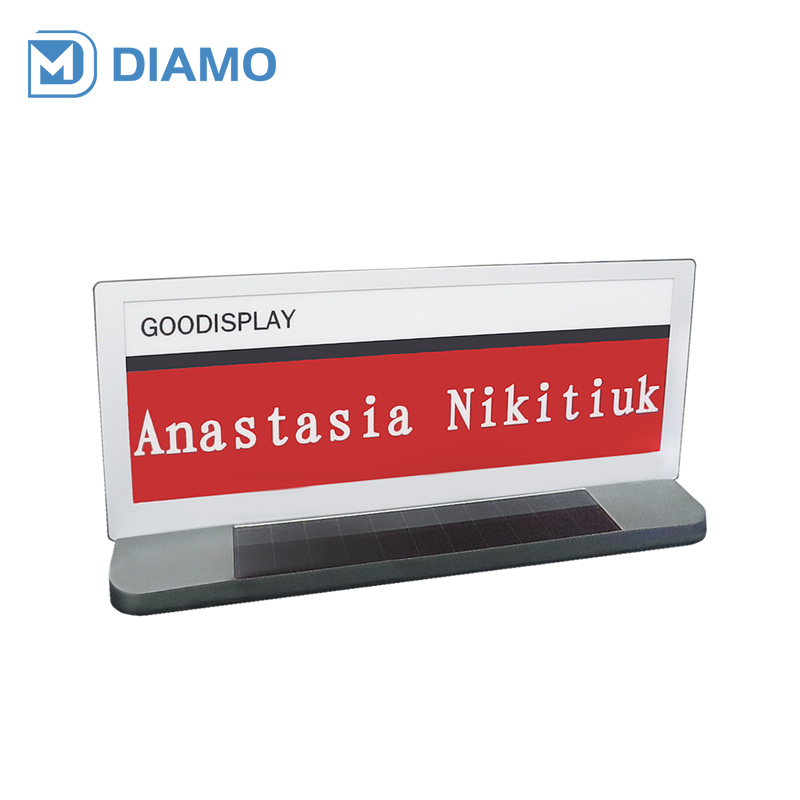
Industry application frontier | The application of electronic luggage tags continues to advance, and electronic paper has great potential in the field of smart civil aviation
- Categories:News
- Author:
- Origin:
- Time of issue:2022-09-04 00:49
- Views:
(Summary description)
Industry application frontier | The application of electronic luggage tags continues to advance, and electronic paper has great potential in the field of smart civil aviation
(Summary description)
- Categories:News
- Author:
- Origin:
- Time of issue:2022-09-04 00:49
- Views:
Industry application frontier | The application of electronic luggage tags continues to advance, and electronic paper has great potential in the field of smart civil aviation

"There are new developments in the airline's electronic luggage tag implementation plan, and the pace of electronic paper luggage tags to replace traditional paper luggage tags seems to be accelerating. According to estimates, the overall market space for electronic paper luggage tags in the world exceeds 600 million, and electronic paper is used in smart civil aviation. The field market will be promising.”
Alaska Airlines announced in July that it is preparing to launch an electronic luggage tag program later this year, which means that Alaska Airlines will become the first U.S. airline to launch an electronic luggage tag program. Developed by Alaska Airlines in partnership with Dutch company BAGTAG, this electronic luggage tag project allows travelers to skip the step of printing traditional luggage tags at the airport.
Passengers can activate these luggage tags from anywhere (home, office or even in the car) 24 hours before their flight. Activation is also as simple as opening the airline's mobile app on the mobile phone used for check-in and touching the electronic luggage tag.
The electronic luggage tag uses electronic paper to display the guest's flight information. It only takes a few seconds to assign a check-in tag to your luggage. The entire check-in process can almost be carried out outside the airport. Using this electronic luggage tag not only Allowing passengers to quickly check their bags (expected 40% less time for passengers to check bags) can also help reduce queues in airport concourses and achieve zero-contact during the epidemic.
Through the use of electronic luggage tags, the whole process of luggage tracking can be realized, and the whereabouts of luggage can be understood at any time, and the industry pain point of not knowing the luggage trajectory information after luggage is lost can be solved. Time saving and great experience.
The electronic luggage tag launched by Alaska Airlines is a passive permanent electronic luggage tag. The technology was first applied to electronic luggage tags in October 2019, when China Eastern Airlines released and launched its maiden flight at Daxing Airport. This kind of electronic luggage tag does not need a built-in battery, and the weak current generated by the NFC radio frequency induction standard in the mobile phone can be used to refresh the electronic paper display screen of the luggage tag. Because there is no built-in battery, it is not only maintenance-free and not easy to be damaged, but also can travel around the world, checked on the plane, and used repeatedly for a long time.
The advantages of the above electronic luggage tags are largely related to the electronic paper display module they use. So why does the screen of the electronic luggage tag use electronic paper display technology? Because of civil aviation regulations, electronic products with batteries cannot be shipped with the aircraft. If they must be shipped with batteries, they must pass a special test and certification, and electronic paper is currently the only one that can maintain the image permanently during static display. Display technology, so electronic luggage tags can only use electronic paper technology in application scenarios.
Starting from the concept of recyclability, green, low carbon and environmental protection, the International Air Transport Association (IATA) advocates the use of recyclable electronic luggage tags, and initiated the drafting of the "Electronic Luggage Tag Implementation Guide" in 2017, which recommends electronic luggage tags. Paper is used as a display because it maintains the image without using electricity and can be recycled.
The global pilot of electronic luggage tags actually predates the formulation of the guidelines. As early as 2013, airlines began to explore and apply them, including Alaska Airlines, which actually began to try to provide electronic luggage tags in 2016. Before 2019, all airlines still used active electronic luggage tags, that is, although they used electronic paper screens, they also had built-in disposable lithium batteries. Because the battery needs to pass the strict certification of civil aviation battery regulations, it has certain defects in versatility, and the cost is also high. In 2019, China Eastern Airlines released the world's first passive permanent electronic luggage tag without built-in battery; in October 2020, the passive NFC electronic luggage tag entered the "Electronic Luggage Tag Implementation Guide" standard, marking electronic luggage The brand conquered passive power extraction technology and was recognized by IATA technical experts.
By 2021, many overseas airlines are already testing passive electronic luggage tags, and then Alaska Airlines announced the launch of the electronic luggage tag program. We can see that with the optimization and iteration of electronic paper luggage tag technology, And under the general trend of promoting the concept of low carbon and environmental protection in the world, the replacement of traditional paper luggage tags by electronic paper luggage tags will become a deterministic event, and there are signs of accelerated pace. Electronic paper will have a bright future in the smart civil aviation market.
Scan the QR code to read on your phone





Designed to enhance collaboration and communication in conference environments, the GDP1248RW1 module provides a dynamic platform for displaying data, presentations, schedules, and interactive content. Bid farewell to traditional paper handouts and static signage—this innovative module brings sophistication and interactivity to every conference room.

Address:No.18, Zhonghua West Road, Dalian, China,116033
E-mail: info@eink-display.com
©2007-2021 Dalian Diamo Electronic Technology Co., Ltd. All Rights Reserved. 辽ICP备2021012387号-2 Website construction:www.300.cn dalian.300.cn
Dalian Diamo Electronic Technology Co., Ltd.
辽ICP备08000578号
Website construction:www.300.cn jinzhou.300.cn











